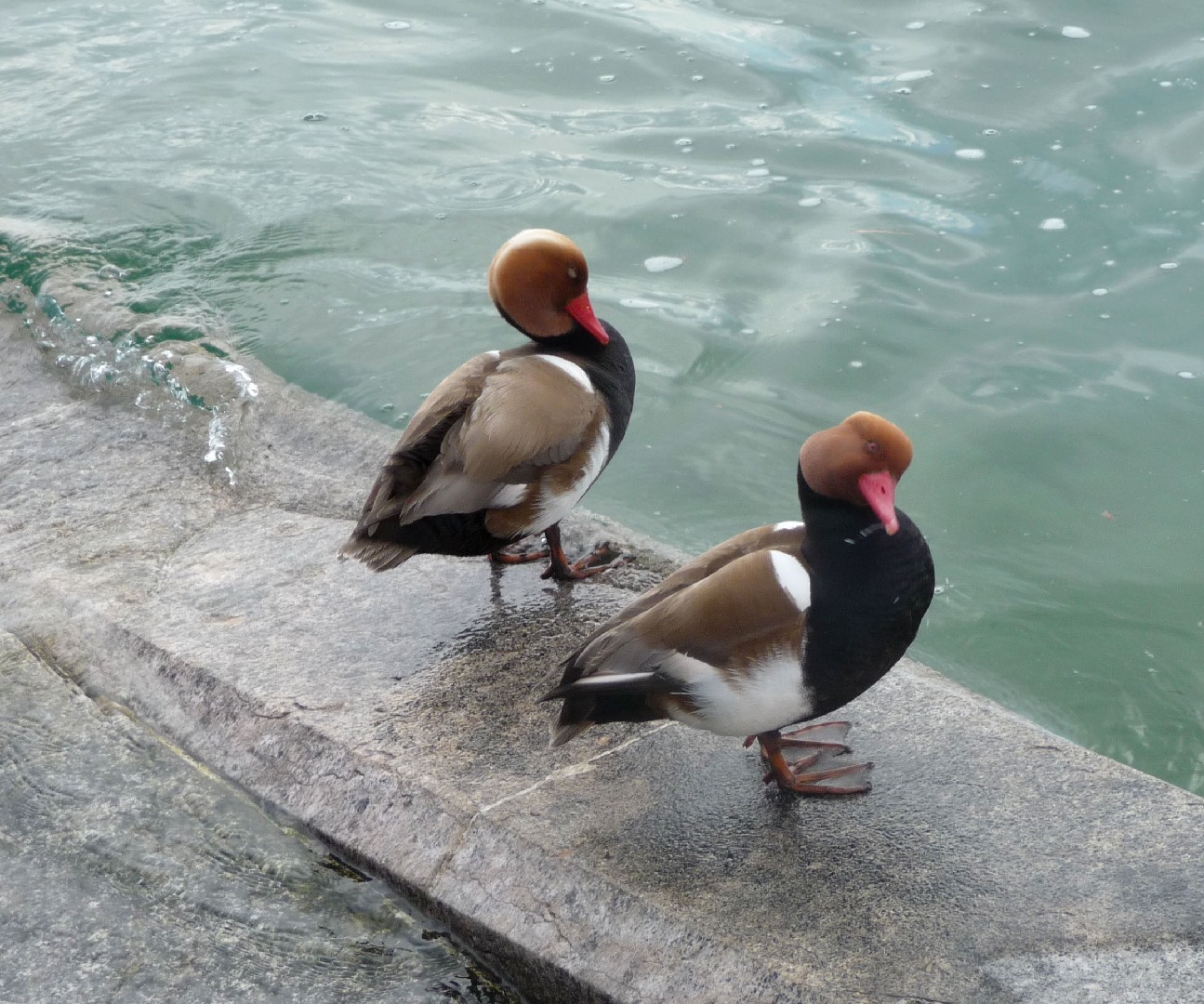Red-crested Pochard
A species of Red-crested Pochard and Allies Scientific name : Netta rufina Genus : Red-crested Pochard and Allies
Red-crested Pochard, A species of Red-crested Pochard and Allies
Botanical name: Netta rufina
Genus: Red-crested Pochard and Allies
Content
Description People often ask General Info
Description
The red-crested pochard (Netta rufina) is a large diving duck. The scientific name is derived from Greek Netta "duck", and Latin rufina, "golden-red" (from rufus, "ruddy"). Its breeding habitat is lowland marshes and lakes in southern Europe and it extends from the steppe and semi-desert areas on the Black Sea to Central Asia and Mongolia, wintering in the Indian Subcontinent and Africa. It is somewhat migratory, and northern birds winter further south into north Africa. The adult male is unmistakable. It has a rounded orange head, red bill and black breast. The flanks are white, the back brown, and the tail black. The female is mainly a pale brown, with a darker back and crown and a whitish face. Eclipse males are like females but with red bills. They are gregarious birds, forming large flocks in winter, often mixed with other diving ducks, such as common pochards. They feed mainly by diving or dabbling. They eat aquatic plants, and typically upend for food more than most diving ducks. A wheezing veht call can be given by the male. Series of hoarse vrah-vrah-vrah calls can also be heard from females. Red-crested pochards build nests by the lakeside among vegetation and lay 8–12 pale green eggs. The birds' status in the British Isles is much confused because there have been many escapes and deliberate releases over the years, as well as natural visitors from the continent. However, it is most likely that they are escapees that are now breeding wild and have built up a successful feral population. They are most numerous around areas of England including Gloucestershire, Oxfordshire and Northamptonshire. The red-crested pochard is one of the species to which the Agreement on the Conservation of African-Eurasian Migratory Waterbirds (AEWA) applies. 
Size
58 cm
Colors
Brown
Black
White
Orange
Life Expectancy
7 years
Nest Placement
Floating
Feeding Habits
Red-crested Pochard primarily feasts on plant matter, including leaves, seeds, grains, and nuts. It forages by dabbling in water for algae and searching vegetation for food. A unique adaptation is its dietary inclusion of fungus, uncommon among similar species.
Habitat
Red-crested Pochard commonly inhabits lowland marshes, lakes, and coastal estuaries characterized by deep, large bodies of fresh to brackish waters with an abundance of fringing vegetation. Preferring open country, red-crested Pochard breeds predominantly in southern Europe's inland wetlands, ranging into steppe and semi-desert regions near the Black Sea to Central Asia and Mongolia, and can be found up to 4180 m elevation in the Himalayas of Ladakh. It is a somewhat migratory species, with northern populations wintering as far south as north Africa.
Dite type
Piscivorous
People often ask
General Info
Feeding Habits
Bird food type
Species Status
Not globally threatened.
